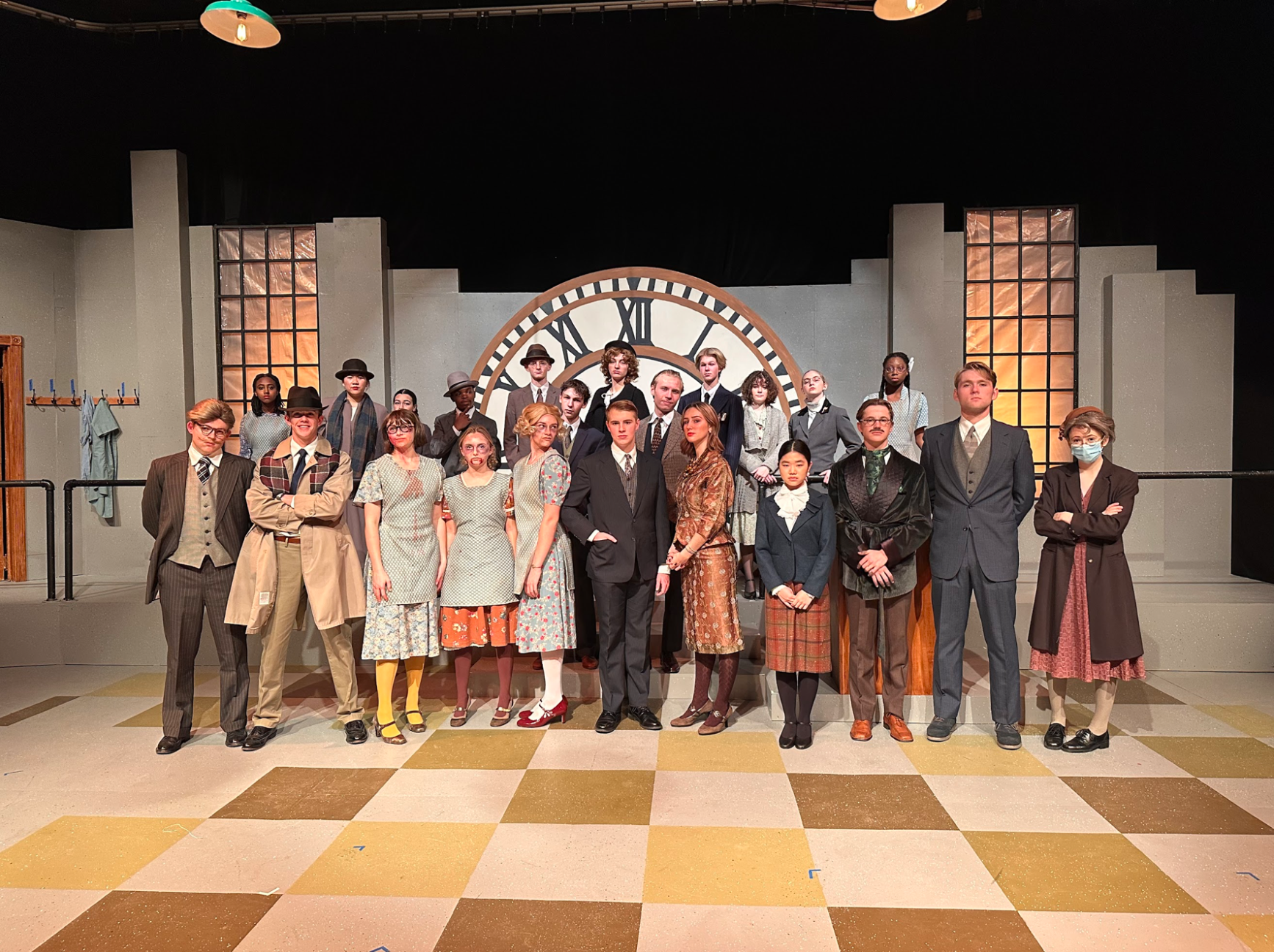
Along with Violet the ghost’s corporeal appearances on Historic Deerfields’ Halloween tour, something spooky has been brewing in the Acting Lab…The true story of the Radium Girls!
Based on real events, Kate Moores’ Radium Girls follows Grace Fryer and her friends as they fight their former employers in the U.S. Radium Corporation to acknowledge the detrimental effects working with radium had on their health.
What started as a few girls with bleeding jaws from Orange, New Jersey soon turned into a nationwide issue. Although it is never made explicitly clear in the abbreviated version Deerfield performed, the girls’ persistence led to several national reform bills, including the development of the U.S. Occupational Safety and Health Administration (OSHA). This was largely due to the publicity they gained through working with their local chapter of the National Consumers league, an organization founded in 1899 dedicated to amplifying the voices of customers and employees, especially those with poor working conditions or few rights.
This struggle is particularly personal to Lillian Regal ’24, whose great-grandmother worked with radium dials in a similar plant in Ottawa, Illinois. Regal believes one of the most powerful themes throughout Radium Girls is the arrogance of the scientific community. She points to when Harriet Roeder, played by Anneke Wittink ’25, justifies her fathers’ actions, saying, “Nobody knew about that stuff back then. Science just wasn’t as advanced, the way it is now,” then proceeds to smoke a cigarette.
Regal acknowledges the humor of the scene, but also addresses the hypocrisy of it, saying that, “as someone who wants to go into science, the play is reminding us to stay humble … some of the things we hold most true can be wrong.”
While this play deals with heavy themes such as workers’ rights, arrogance, sexism, and death, not all is somber in the rehearsal room.
Gavin Mariani ’23 plays the in-denial antagonist of the production, managing and eventually taking over the U.S. Radium Corporations’ branch in North Jersey. Mariani’s character acts as the main opposition to Grace Fryer, played by Lily Pierce ’25, a conflict representing the battle between big businesses and small communities. However, Mariani more enjoys developing the conflict between Roeder and his spouse as the company’s declining public image pulls their family apart. Put less delicately, his favorite part of rehearsal is “yelling at Ainslie,” who plays Roeder’s spouse. Other cast members testify to the unique closeness of the ensemble. Pierce adds that, “It’s truly an ensemble piece, we have a really large cast for this show, and getting to do ensemble work and character work is such a fun time.”
Visual & Performing Arts Chair Catriona Hynds, the play’s director, concedes this was significant to her selection of Radium Girls for this terms’ production. According to Mrs. Hynds, the “Fall show traditionally is a show that [she is] looking to incorporate as many actors as possible…to include new students as well as as many students that are already in the program as possible.”
Other considerations included trying to find a show that “met casting needs, allowed for juicy roles for already pretty established actors,” as well as something “spooky because it’s around Halloween.” Mrs. Hynds “thinks the fall is always time for a drama.”
One particularly exciting element for the costuming team was the time period of Radium Girls. Costume Designer Karen St. Pierre says this production was an undertaking that required “lot of research, whether through my fashion library or through the internet.” She added, “It was difficult because I wasn’t looking for what was in style but wanted to know: what did real people wear?”
Radium Girls uses between fifty and sixty costumes, not including wigs for several characters including Grace, Kathryn, Harriet, and several other characters.
Costuming for a show is an art within itself as St. Pierre reminds us, the clothes someone wears show their character arc and important plot points in itself. She elaborated, saying that “the story isn’t just Roader or any other individual character, the factory itself is a character.” Pierre exemplifies this by using green as a physical manifestation of Radium and the effects it had on the girls and the people in their lives. She states, “Irene is the first to die so she’s not dressed in green from head to toe, but the center brooch in her costume is a green butterfly. The butterfly is symbolic of both change and radium. The women pioneered change; they helped create OSHA.”
The characters’ clothing and the background lighting incorporates more and more green over the course of the play to show how the issue becomes larger and larger with time.
Mrs. Hynds concludes that it’s a “rich tradition of going to see shows here, it gets a whole new class of ninth graders exposed to theater. Half of the cast are new faces, including our own Captain Deerfield, Peter Shea ’23, who has taken a term away from football to fulfill one of his dreams, which was being in a theater production.”
If the magical result of this term’s theater production enchanted you, consider giving acting or tech a try! Mrs. Hynds and the theater department’s staple participants are excited to welcome you to the community. Who knows? As Mrs. Hynds speculates, “Maybe you too could be in the next production.”

